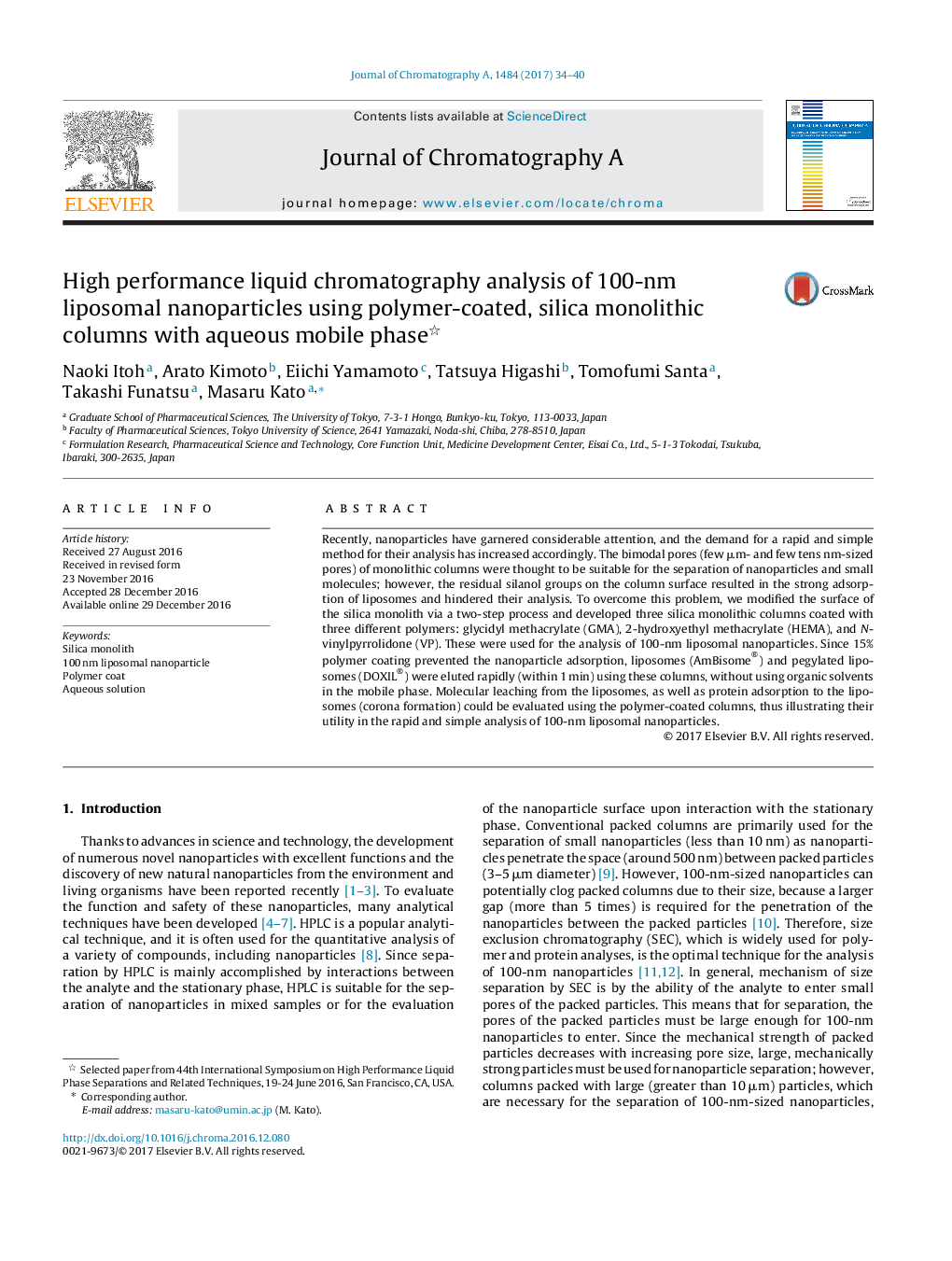| Article ID | Journal | Published Year | Pages | File Type |
|---|---|---|---|---|
| 5135316 | Journal of Chromatography A | 2017 | 7 Pages |
Recently, nanoparticles have garnered considerable attention, and the demand for a rapid and simple method for their analysis has increased accordingly. The bimodal pores (few μm- and few tens nm-sized pores) of monolithic columns were thought to be suitable for the separation of nanoparticles and small molecules; however, the residual silanol groups on the column surface resulted in the strong adsorption of liposomes and hindered their analysis. To overcome this problem, we modified the surface of the silica monolith via a two-step process and developed three silica monolithic columns coated with three different polymers: glycidyl methacrylate (GMA), 2-hydroxyethyl methacrylate (HEMA), and N-vinylpyrrolidone (VP). These were used for the analysis of 100-nm liposomal nanoparticles. Since 15% polymer coating prevented the nanoparticle adsorption, liposomes (AmBisome®) and pegylated liposomes (DOXIL®) were eluted rapidly (within 1 min) using these columns, without using organic solvents in the mobile phase. Molecular leaching from the liposomes, as well as protein adsorption to the liposomes (corona formation) could be evaluated using the polymer-coated columns, thus illustrating their utility in the rapid and simple analysis of 100-nm liposomal nanoparticles.
